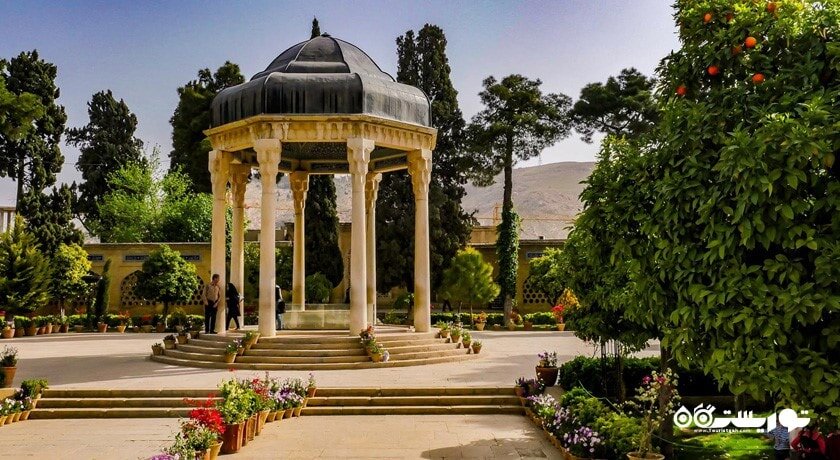Restoration of Hafez mausoleum starts

TEHRAN—Head of Fars Cultural Heritage Department Mohsen Ziaei gave news of beginning of organizing and restoring Hafez mausoleum, a historical and cultural site where the 14th-century Persian poet is laid to rest. Better known as Hafezieh, the monument is considered one of the most important attractions of Shiraz, Fars province and Iran, he pointed out.
According to ISNA, Hafezieh has registered the highest number of tourists across the country in recent years, he added.
He also said that organizing and restoring the mausoleum started with a credit worth 18.5 billion rials ($20,555).
Ziaei continued that lightening, moisture insulation of the roof and brick pavement of the tombs on the western side of the tomb, repairs and restoration of the brick parts of the building on the northern side and the tombs of the western side of the mausoleum, and the implementation of paving stones locally in the required parts of the area are being carried out.
He said that this restoration operation is being carried out by a contractual method, predicting that it would be completed by the end of Iranian month of Aban (November 21).
Ziaei explained that Hafezieh pertains to Al-e Mozaffar era, adding that it was registered under the number 1009 on National Heritage List in December 1966.
Hafezieh site is set in a charming orchard. Hafez’s tomb is surmounted by an octagonal dome supported by eight stone columns. The internal side of the tomb bears elaborate tilework.
Hafez poetry soaked in a deep sense of humanity echoes ranges of historical events, biographical descriptions, and details of life in his hometown, Shiraz. He is most famous for his Divan and among the many partial English translations of this work are those by Gertrude Bell and H. Wilberforce Clarke.
Celebrated as the heartland of Persian culture for over 2000 years, Shiraz has become synonymous with education, nightingales, poetry, and crafts skills passed down from generation to generation. It was one of the most important cities in the medieval Islamic world and was the Iranian capital during the Zand dynasty from 1751 to 1794.
KD
Leave a Comment